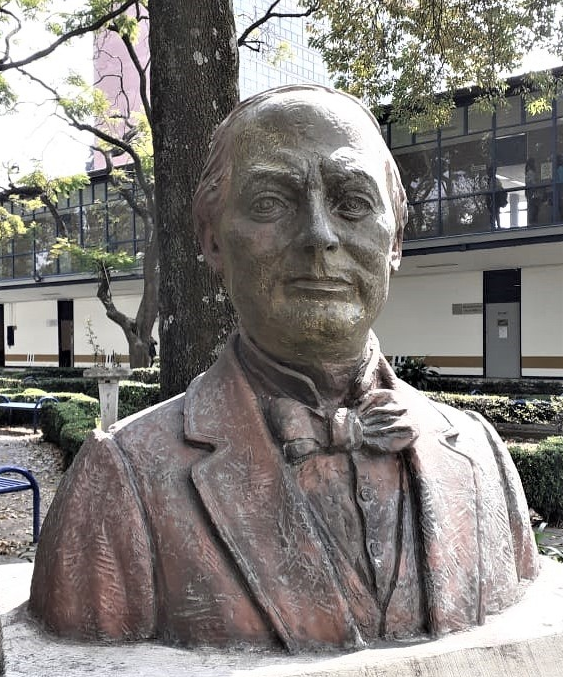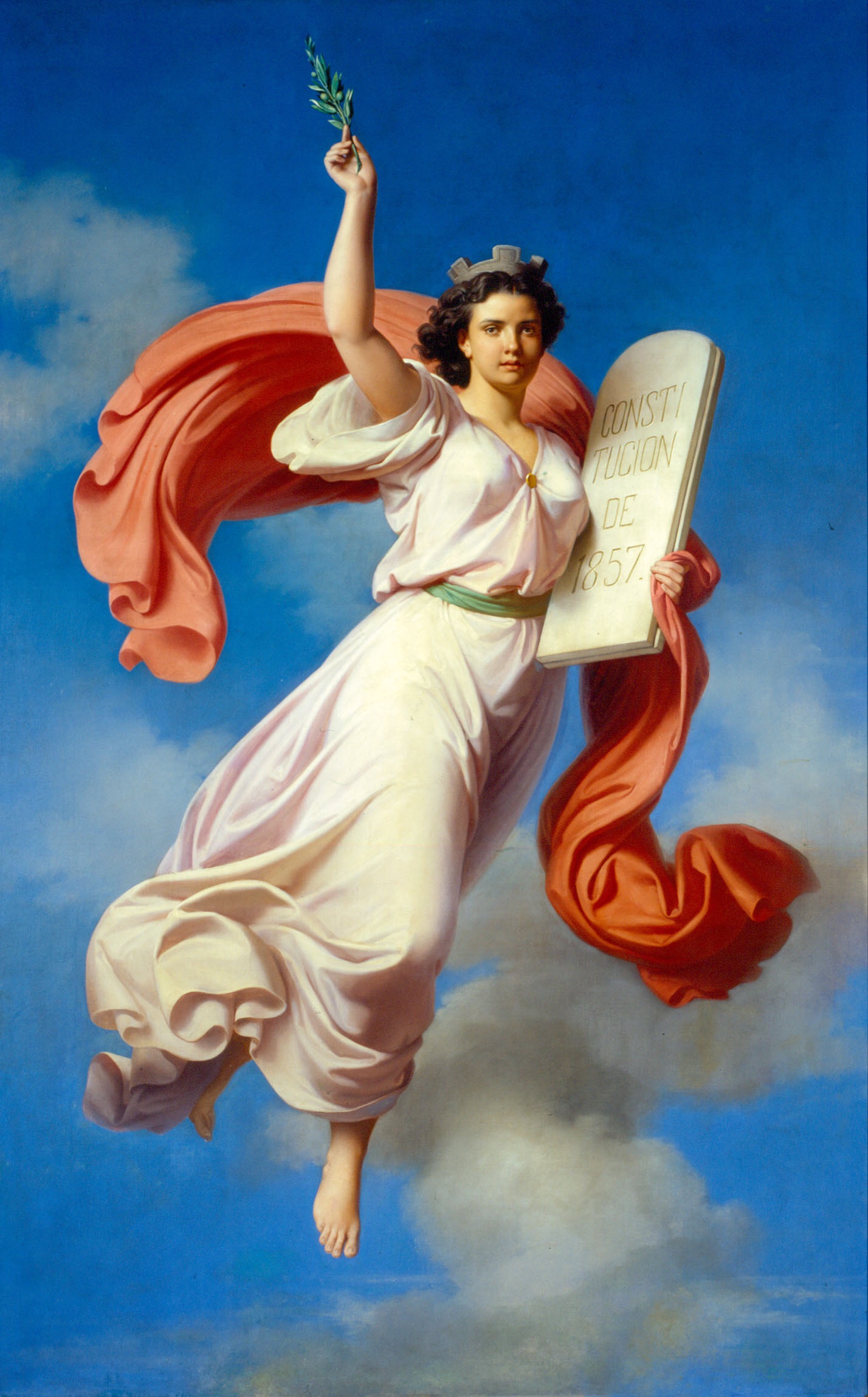|
Plan De La Noria
The Plan de la Noria was a revolutionary call to arms intended to oust Mexican President Benito Juárez, who had been elected to a fourth term. Liberal General Porfirio Díaz issued it on 8 November 1871, immediately following his defeat by Juárez in the presidential election. Neither Juárez, Díaz, nor the third candidate, Sebastián Lerdo de Tejada, won a majority of votes. As a result, the Mexican Congress had to choose the victor; it was dominated by Juáristas and elected Juárez to his fourth term. Díaz drafted the Plan de la Noria demanding electoral freedom and no re-election. He gained some supporters from the army and enemies of Juárez, who supported Díaz for their own reasons. He was temporarily defeated by government forces in Oaxaca, where his brother Felix was killed. After President Juárez died of a heart attack in July 1872, his successor, Chief Justice Sebastián Lerdo, assumed the presidency and pardoned the rebels in an effort to stabilize the countr ... [...More Info...] [...Related Items...] OR: [Wikipedia] [Google] [Baidu] |
Benito Juárez
Benito Pablo Juárez García (; 21 March 1806 – 18 July 1872) was a Liberalism in Mexico, Mexican liberal politician and lawyer who served as the 26th president of Mexico from 1858 until his death in office in 1872. As a Zapotec peoples, Zapotec, he was the first Indigenous peoples of Mexico, indigenous president of Mexico and the first indigenous head of state in the postcolonial Americas. Born in Oaxaca to a poor rural family and orphaned as a child, Juárez was looked after by his uncle and eventually moved to Oaxaca City at the age of 12, working as a domestic servant. Aided by a lay Franciscan, he enrolled in a seminary and studied law at the Benito Juárez Autonomous University of Oaxaca, Institute of Sciences and Arts, where he became active in liberal politics. After his appointment as a judge, he married Margarita Maza, a woman of European ancestry from a socially distinguished family in Oaxaca City, and rose to national prominence after the ouster of Antonio López d ... [...More Info...] [...Related Items...] OR: [Wikipedia] [Google] [Baidu] |
Porfirio Díaz
José de la Cruz Porfirio Díaz Mori ( or ; ; 15 September 1830 – 2 July 1915), known as Porfirio Díaz, was a Mexican general and politician who served seven terms as President of Mexico, a total of 31 years, from 28 November 1876 to 6 December 1876, 17 February 1877 to 1 December 1880 and from 1 December 1884 to 25 May 1911. The entire period from 1876 to 1911 is often referred to as Porfiriato and has been characterized as a ''de facto'' dictatorship. A veteran of the War of the Reform (1858–1860) and the French intervention in Mexico (1862–1867), Díaz rose to the rank of general, leading republican troops against the French-backed rule of Maximilian I. He subsequently revolted against presidents Benito Juárez and Sebastián Lerdo de Tejada on the principle of no re-election. Díaz succeeded in seizing power, ousting Lerdo in a coup in 1876, with the help of his political supporters, and was elected in 1877. In 1880, he stepped down and his political ally Manuel ... [...More Info...] [...Related Items...] OR: [Wikipedia] [Google] [Baidu] |
Sebastián Lerdo De Tejada
Sebastián Lerdo de Tejada y Corral (; 24 April 1823 – 21 April 1889) was Mexican liberal politician and jurist who served as the 27th president of Mexico from 1872 to 1876. A successor to Benito Juárez, who died in office in July 1872, Lerdo de Tejada was elected to his own presidential term in November 1872. Previously, he served as Chief Justice of the Supreme Court. Juárez's political rival, liberal General Porfirio Díaz, had attempted a coup against Juárez, but his Plan de la Noria failed and Díaz was eliminated as a political rival during Lerdo de Tejada's 1872–1876 term, giving him considerable leeway to pursue his program without political interference. During his term, he succeeded in pacifying the country after decades of political unrest and strengthening the Mexican state. He was elected for another term in 1876, but was overthrown by Porfirio Díaz and his supporters under the Plan of Tuxtepec, which asserted the principle of no-reelection to the presidenc ... [...More Info...] [...Related Items...] OR: [Wikipedia] [Google] [Baidu] |
Ramón Eduardo Ruiz
Ramón Eduardo Ruiz (September 9, 1921 – July 6, 2010) was an American historian of Mexico and Latin America. He was the author of fifteen books on Mexican and Latin American history and in 1998 he was awarded the US National Humanities Medal. Ruiz was born in San Diego, California as the son of a former member of the Mexican Navy who left that country during the Mexican revolution. He served as a Pacific B-29 pilot in the Army Air Forces during World War II. He earned his bachelor's degree from San Diego State University in 1947, his master's from Claremont Graduate University in 1948, and his doctorate from the University of California, Berkeley in 1954. Ruiz taught at the University of Oregon, Smith College, and the University of California, San Diego The University of California, San Diego (UC San Diego or colloquially, UCSD) is a public university, public Land-grant university, land-grant research university in San Diego, California. Established in 1960 near the pr ... [...More Info...] [...Related Items...] OR: [Wikipedia] [Google] [Baidu] |
Plan De Tuxtepec
In Mexican history, the Plan of Tuxtepec was a plan drafted by General Porfirio Díaz in 1876 and proclaimed on 10 January 1876 in the Villa de Ojitlán municipality of San Lucas Ojitlán, Tuxtepec district, Oaxaca. It was signed by a group of military officers led by Colonel Hermenegildo Sarmiento and drafted by porfiristas Vicente Riva Palacio, Irineo Paz, and Protasio Tagle on the instigation of Díaz. Díaz signed the previous version of the plan in December 1875, which did not include the three most important articles that appointed Diaz as president. It disavowed Sebastián Lerdo de Tejada as President, while acknowledging the Constitution and the Reform laws, and proclaimed Díaz as the leader of the movement. Díaz later became the president of Mexico. History Upon the death of President Benito Juárez in 1872, Sebastián Lerdo de Tejada, the President of the Supreme Court, assumed the interim presidency, and called for new elections. The two candidates registered were ... [...More Info...] [...Related Items...] OR: [Wikipedia] [Google] [Baidu] |
Plans In Mexican History
In Mexican history, a ''plan'' was a declaration of principles announced in conjunction with a rebellion, usually armed, against the central government of the country (or, in the case of a regional rebellion, against the state government). Mexican plans were often more formal than the ''pronunciamientos'' that were their equivalent elsewhere in Spanish America and Spain. Some were as detailed as the United States Declaration of Independence. Some plans simply announced that the current government was null and void and that the signer of the plan was the new president. A total of more than one hundred plans were declared. One compendium, ''Planes políticos, proclamas, manifiestos y otros documentos de la Independencia al México moderno, 1812–1940'', compiled by Román Iglesias González (Mexico City: UNAM, 1998), contains the full texts of 105 plans. About a dozen of these are widely considered to be of great importance in discussions of Mexican history. Chronological list of Pla ... [...More Info...] [...Related Items...] OR: [Wikipedia] [Google] [Baidu] |
Plans In Mexico
A plan is typically any diagram or list of steps with details of timing and resources, used to achieve an objective to do something. It is commonly understood as a temporal set of intended actions through which one expects to achieve a goal. For spatial or planar topologic or topographic sets see map. Plans can be formal or informal: * Structured and formal plans, used by multiple people, are more likely to occur in projects, diplomacy, careers, economic development, military campaigns, combat, sports, games, or in the conduct of other business. In most cases, the absence of a well-laid plan can have adverse effects: for example, a non-robust project plan can cost the organization time and money. * Informal or ad hoc plans are created by individuals in all of their pursuits. The most popular ways to describe plans are by their breadth, time frame, and specificity; however, these planning classifications are not independent of one another. For instance, there is a close rel ... [...More Info...] [...Related Items...] OR: [Wikipedia] [Google] [Baidu] |
Liberalism In Mexico
Liberalism in Mexico was part of a broader nineteenth-century political trend affecting Western Europe and the Americas, including the United States, that challenged entrenched power. In Mexico, liberalism sought to make fundamental the equality of individuals before the law, rather than their benefiting from special privileges of corporate entities, especially the Roman Catholic Church, the military, and indigenous communities. Liberalism viewed universal, free, secular education as the means to transform Mexico's citizenry. Early nineteenth-century liberals promoted the idea of economic development in the overwhelmingly rural country where much land was owned by the Catholic Church and held in common by indigenous communities to create a large class of yeoman farmers. Liberals passed a series of individual Reform laws and then wrote a new constitution in 1857 to give full force to the changes. Liberalism in Mexico "was not only a political philosophy of republicanism but a pack ... [...More Info...] [...Related Items...] OR: [Wikipedia] [Google] [Baidu] |




